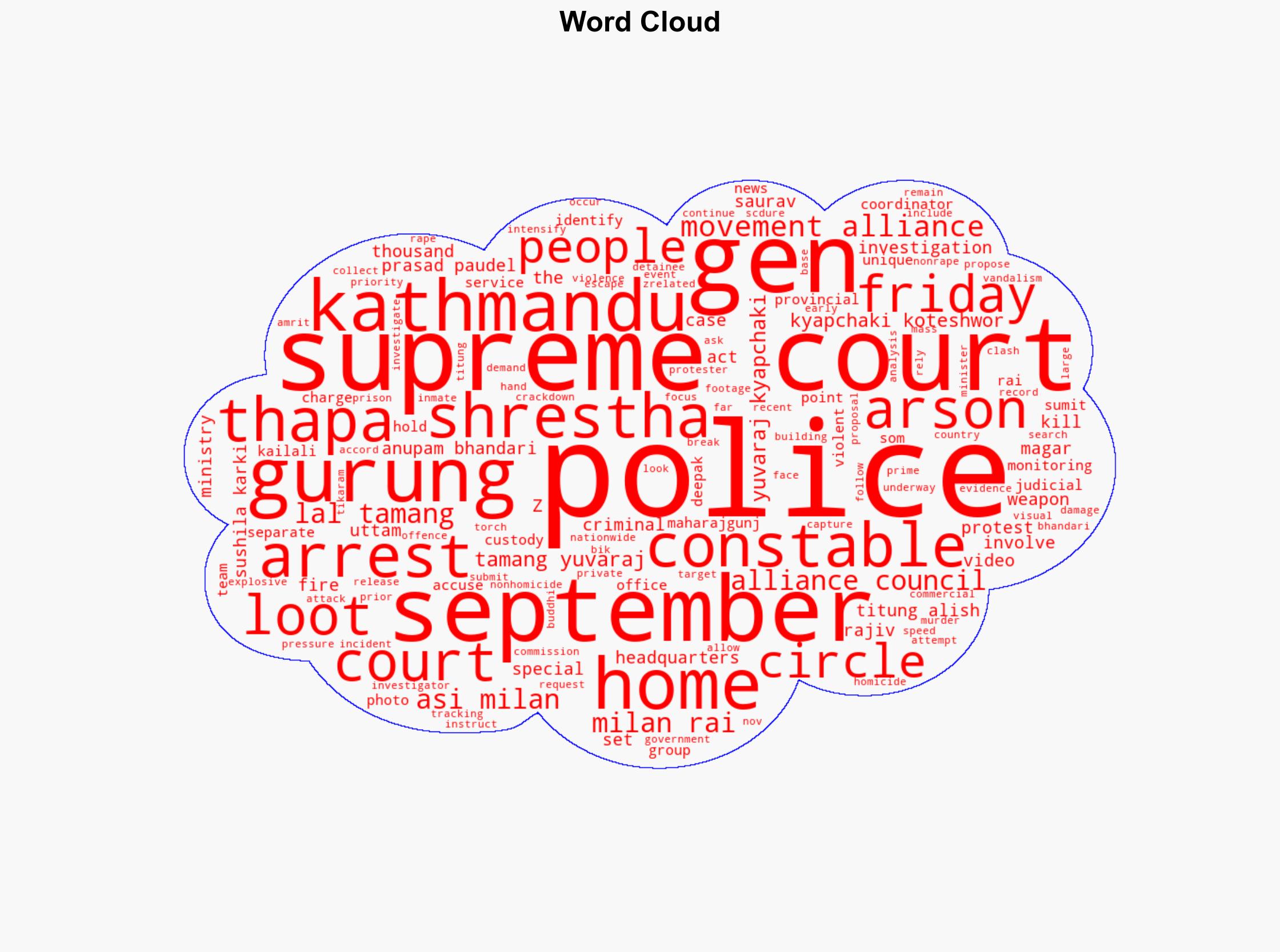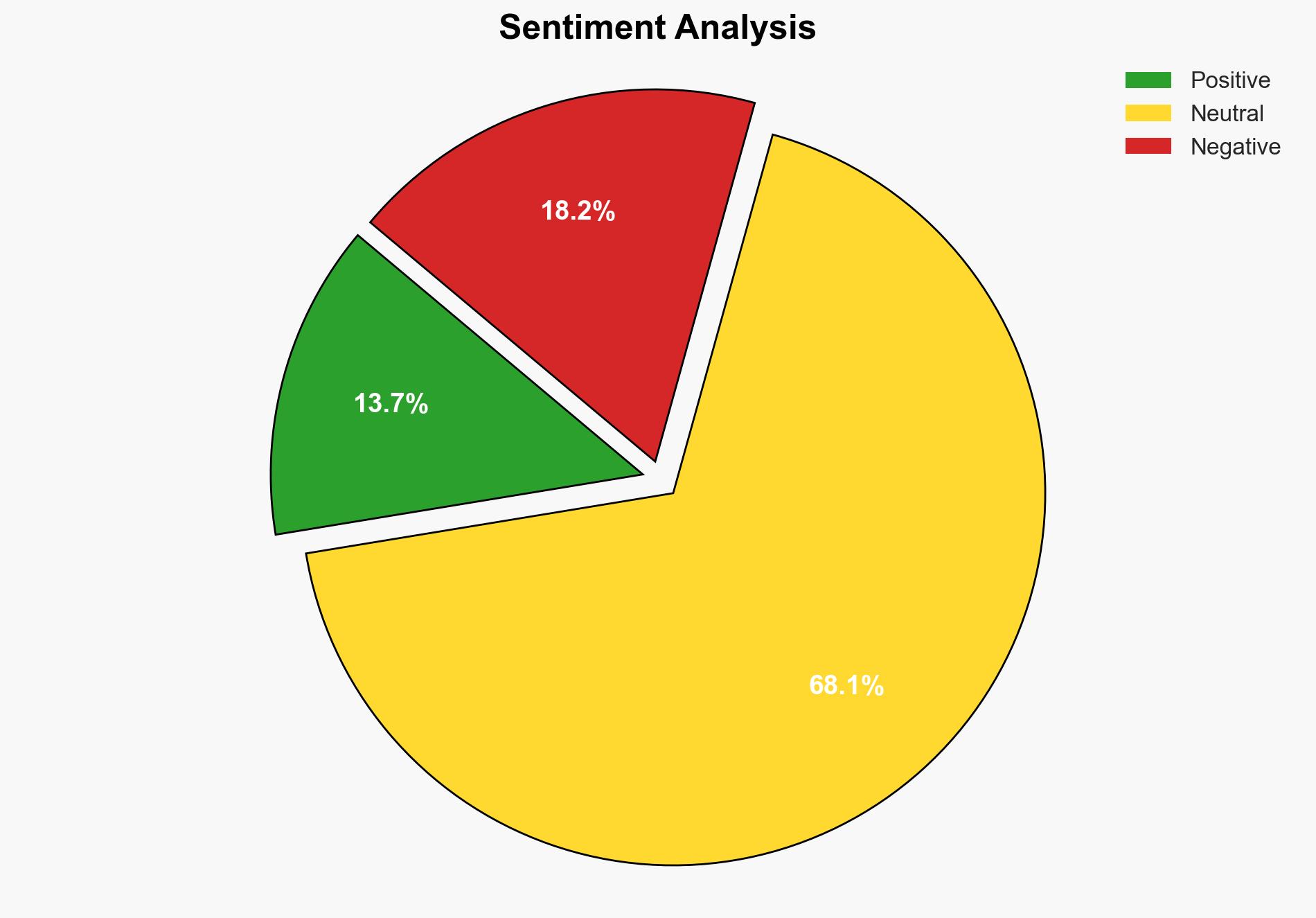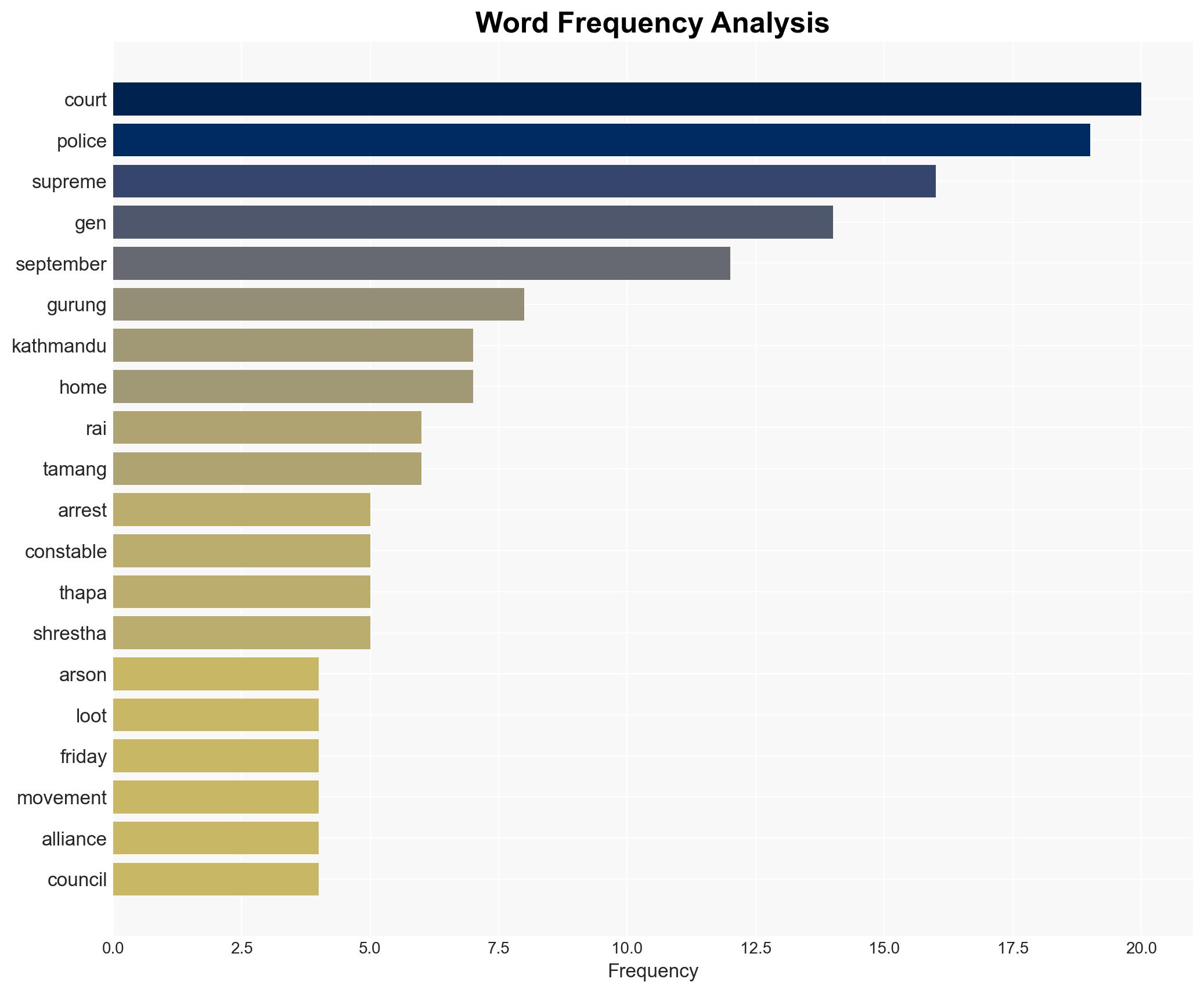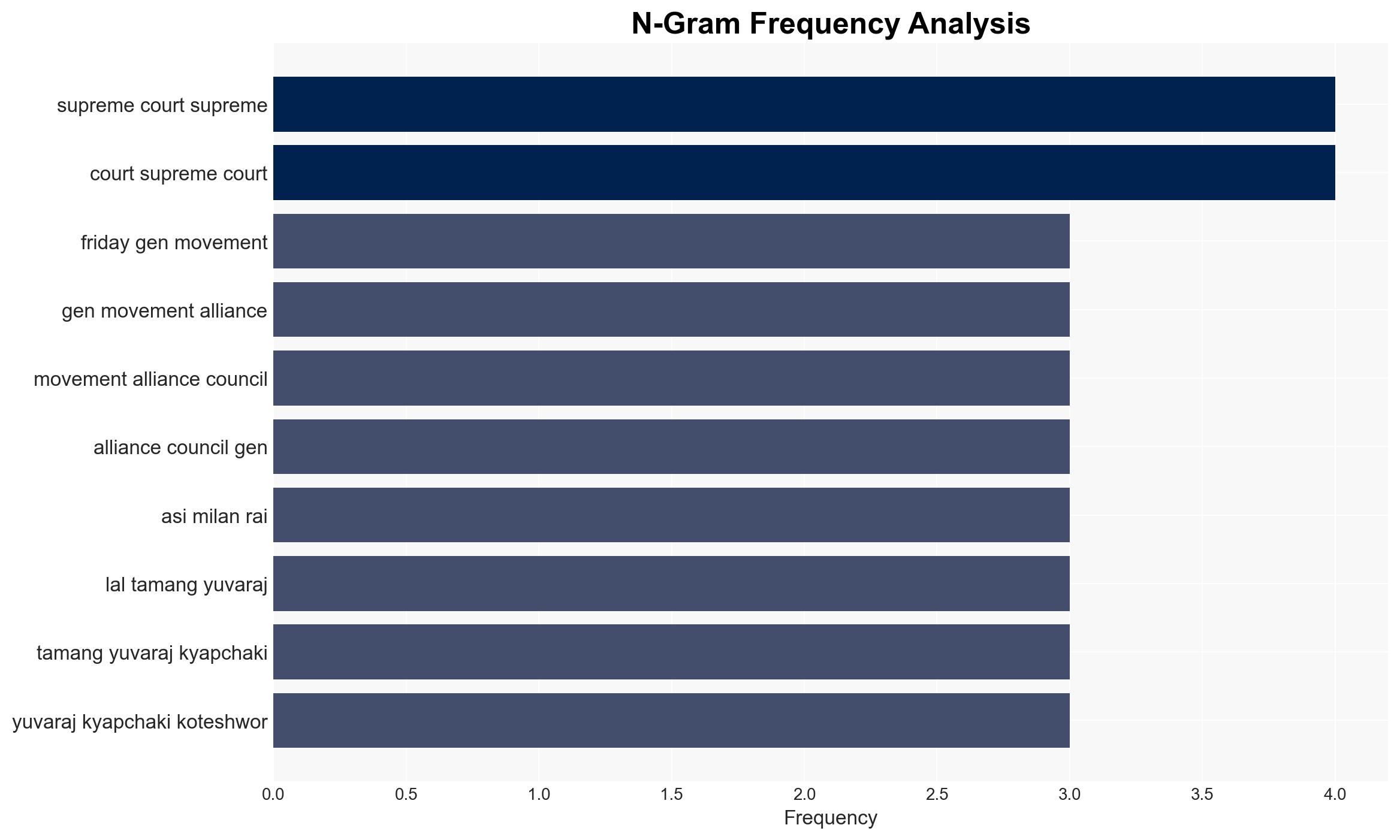Police intensify search for group that set Supreme Court on fire – Mypeoplesreview.com
Published on: 2025-11-17
AI-powered OSINT brief from verified open sources. Automated NLP signal extraction with human verification. See our Methodology and Why WorldWideWatchers.
Intelligence Report:
1. BLUF (Bottom Line Up Front)
The most supported hypothesis is that the arson attack on the Supreme Court is a coordinated effort by the Gen Z Movement Alliance to protest against perceived governmental injustices. This hypothesis is supported by the timing of the attack, the involvement of Gen Z individuals in related incidents, and the demands made by the group. The confidence level in this assessment is moderate due to the lack of direct evidence linking the group to the specific act of arson. Recommended actions include enhancing intelligence operations to monitor Gen Z activities and engaging in dialogue to address their grievances.
2. Competing Hypotheses
Hypothesis 1: The arson attack on the Supreme Court is a coordinated action by the Gen Z Movement Alliance as part of a broader protest strategy against the government.
Hypothesis 2: The arson attack is the work of an independent extremist faction exploiting the current unrest to further destabilize the government.
Hypothesis 1 is more likely due to the alignment of the attack with the ongoing protests and demands from the Gen Z Movement Alliance. However, the possibility of an independent faction cannot be entirely ruled out given the chaotic environment and the presence of multiple actors with varying agendas.
3. Key Assumptions and Red Flags
Assumptions include the belief that the Gen Z Movement Alliance has the capability and intent to conduct such an attack. A red flag is the potential for misinformation or deception by involved parties to mislead authorities. The lack of concrete evidence directly linking the group to the arson is a significant gap.
4. Implications and Strategic Risks
The attack on the Supreme Court could escalate political tensions, potentially leading to increased civil unrest and further violent incidents. There is a risk of copycat attacks on other governmental institutions, which could destabilize the political environment and undermine public trust in state institutions. Economically, prolonged unrest could deter investment and tourism.
5. Recommendations and Outlook
- Enhance surveillance and intelligence-gathering on Gen Z Movement activities.
- Initiate dialogue with Gen Z leaders to address grievances and reduce tensions.
- Strengthen security measures around key governmental institutions to prevent further attacks.
- Best-case scenario: Successful dialogue leads to de-escalation and restoration of order.
- Worst-case scenario: Continued unrest leads to widespread violence and governmental instability.
- Most-likely scenario: Sporadic incidents of violence continue, but do not significantly destabilize the government.
6. Key Individuals and Entities
Sushila Karki, Prime Minister – Target of Gen Z Movement demands.
Gen Z Movement Alliance – Main group suspected of orchestrating protests and possibly the arson.
Police Headquarters – Leading the investigation into the arson and related incidents.
7. Thematic Tags
Structured Analytic Techniques Applied
- Cognitive Bias Stress Test: Expose and correct potential biases in assessments through red-teaming and structured challenge.
- Bayesian Scenario Modeling: Use probabilistic forecasting for conflict trajectories or escalation likelihood.
- Network Influence Mapping: Map relationships between state and non-state actors for impact estimation.
Explore more:
National Security Threats Briefs ·
Daily Summary ·
Support us
·





